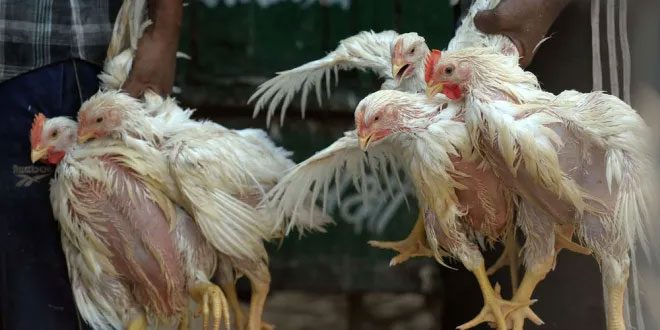According to a new study published in the journal Nature Communications on October 10, scientists have used a gene-editing technology called CRISPR to create chickens with a certain level of resistance to avian influenza.
The New York Times (USA) assesses that this research shows that genetic engineering could be a potential tool to reduce avian influenza—a group of viruses that pose serious risks to both animals and humans. However, the scientists also highlighted the limitations and potential risks of the CRISPR method in this study.
The researchers found that gene-edited chickens can still contract avian influenza, especially when exposed to the virus at very high doses. When scientists edited only one gene in the chickens, the virus quickly adapted. The authors of the study indicated that this finding suggests multiple genes need to be edited to create chickens that are truly resistant to avian influenza. Moreover, they must proceed carefully to avoid promoting the virus’s evolution.
Professor Wendy Barclay, a virologist at Imperial College London (UK) and a co-author of the study, stated at a press conference that this is: “evidence of the concept that we can aim to create virus-resistant chickens. But we are not there yet.”
Some scientists not involved in the research hold a different view. Dr. Carol Cardona at the University of Minnesota (USA) remarked: “This is an outstanding study.” She noted that the results indicate how challenging it will be to create chickens that can stay one step ahead of avian influenza. The avian influenza virus evolves quite rapidly.
Avian influenza is a group of influenza viruses that have adapted to spread in birds. Over the years, an extremely dangerous strain of avian influenza known as H5N1 has rapidly spread across the globe, killing countless poultry and wild birds. It has also infected some wild mammals and has been detected in a few humans. Scientists are concerned that this virus could mutate to spread more easily among people, potentially causing a pandemic.
Many countries have attempted to prevent the virus by enhancing biosecurity on farms, isolating facilities, and culling infected poultry. However, this virus has become so widespread among wild birds that it is nearly impossible to contain. Some countries have begun vaccinating poultry; however, this poses numerous economic and logistical challenges.
If scientists can help chickens develop resistance to avian influenza, farmers will not need to routinely vaccinate new flocks. Dr. Mike McGrew at the Roslin Institute, University of Edinburgh (Scotland), who participated in the study, stated that gene editing “is a new potential method for creating long-lasting changes in the disease resistance of animals. This trait can be inherited from gene-edited animals to their offspring.”

Chickens for sale at a poultry market in New Delhi, India. (Photo: AFP/TTXVN).
CRISPR is a molecular tool that enables scientists to make targeted edits in DNA, altering the genetic code at a precise point in the genome. Researchers used this method to modify a chicken gene that encodes for a protein called ANP32A. The avian influenza virus can “hijack ANP32A” to replicate itself. These modifications are designed to prevent the avian influenza virus from binding to the protein—and thus stop the virus from multiplying within the chickens.
According to the researchers, the editing does not seem to have negative health consequences for the chickens. Researcher Alewo Idoko-Akoh at the University of Edinburgh stated: “We observe that they are healthy, and the gene-edited hens also lay eggs normally.”
The researchers then sprayed a dose of the influenza virus into the nostrils of 10 unedited control chickens. They used a mild strain of avian influenza, different from the strain that has caused major outbreaks in recent years.
All control chickens were infected with the virus and subsequently transmitted the disease to other control chickens in the same coop. When the researchers directly inoculated 10 gene-edited chickens with the influenza virus, only one became infected. It had a low viral load and did not transmit the virus to other edited chickens.
Next, the scientists injected the edited chickens with a dose of the virus that was over 1,000 times higher; half of the chickens became infected. However, the researchers noted that these infected chickens typically shed lower amounts of the virus compared to the control chickens exposed to the same high dose.
The researchers then examined virus samples from the infected gene-edited chickens. They found that these samples had several notable mutations that seemed to allow the virus to use the modified ANP32A protein for replication. Some of these mutations also helped the virus replicate better in human cells. However, the researchers noted that these mutations, in isolation, would not be sufficient to create a virus well-adapted to humans.
The researchers found that mutated influenza viruses could also replicate even in the complete absence of ANP32A protein by utilizing two other proteins from the same family. When scientists created chicken cells lacking all three of these proteins, the virus could not replicate. These chicken cells also had resistance to the highly lethal H5N1 strain that has been spreading globally for many years. The researchers are currently working to create chickens with edits in all three genes coding for these proteins.


















































